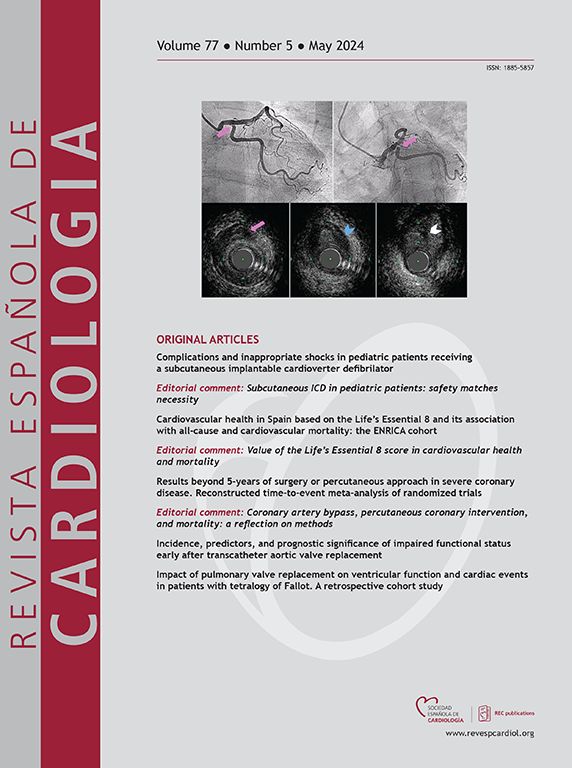遗传性主动脉疾病患者主动脉风险评估的现状和未来
IF 5.9
2区 医学
Q2 Medicine
引用次数: 0
摘要
遗传性胸主动脉疾病(HTAD)是一组以主动脉并发症风险增加为特征的多种遗传疾病。这些患者的标准监测包括监测主动脉直径,直到达到规定的阈值,此时建议进行预防性主动脉手术。然而,评估这些患者的主动脉风险要复杂得多,并且在许多方面仍未完全了解。有几个因素导致了这种复杂性,包括HTAD内疾病的多样性和低患病率,以及对影响主动脉扩张进展和急性主动脉事件发生的因素的有限了解。本文综述了HTAD中与主动脉风险相关的临床、遗传和影像学因素的最新知识,并探讨了它们在改善风险评估方面的潜在作用。通过加深我们对这些因素的理解,我们的目标是提高风险分层的准确性,并为HTAD患者制定更有效、个性化的管理策略,最终目标是改善这些遗传疾病患者的临床结果和生活质量。本文章由计算机程序翻译,如有差异,请以英文原文为准。
Presente y futuro de la evaluación del riesgo aórtico en pacientes con enfermedad aórtica hereditaria
Heritable thoracic aortic diseases (HTAD) are a group of diverse genetic conditions characterized by an increased risk of aortic complications. The standard surveillance of these patients involves monitoring aortic diameters until a defined threshold is reached, at which point preventive aortic surgery is recommended. However, assessing aortic risk in these patients is far more complex and, in many aspects, remains incompletely understood. Several factors contribute to this complexity, including the diversity and low prevalence of the conditions within HTAD and the limited understanding of the factors influencing the progression of aortic dilation and the advent of acute aortic events. This article reviews current knowledge on clinical, genetic, and imaging factors related to aortic risk in HTAD and explores their potential future roles in improving risk assessment. By advancing our understanding of these factors, we aim to enhance the precision of risk stratification and develop more effective, personalized management strategies for HTAD patients, with the final goal of improving clinical outcomes and quality of life in individuals affected by these genetic disorders.
求助全文
通过发布文献求助,成功后即可免费获取论文全文。
去求助
来源期刊

Revista espanola de cardiologia
医学-心血管系统
CiteScore
4.20
自引率
13.60%
发文量
257
审稿时长
28 days
期刊介绍:
Revista Española de Cardiología, Revista bilingüe científica internacional, dedicada a las enfermedades cardiovasculares, es la publicación oficial de la Sociedad Española de Cardiología.
 求助内容:
求助内容: 应助结果提醒方式:
应助结果提醒方式:


